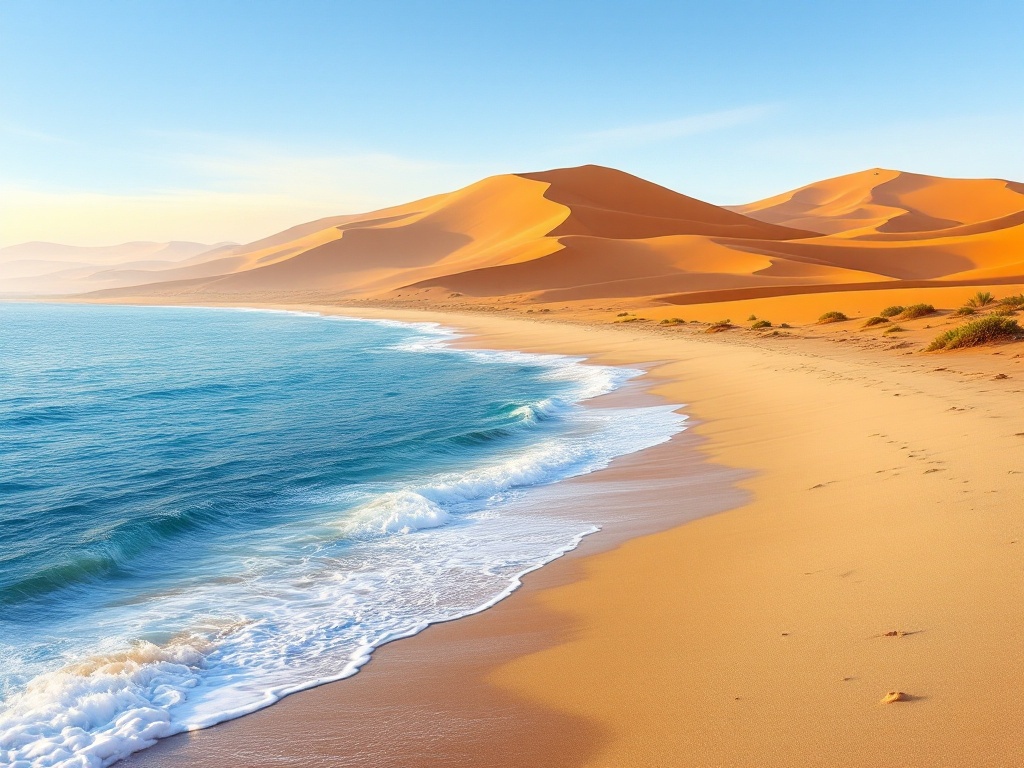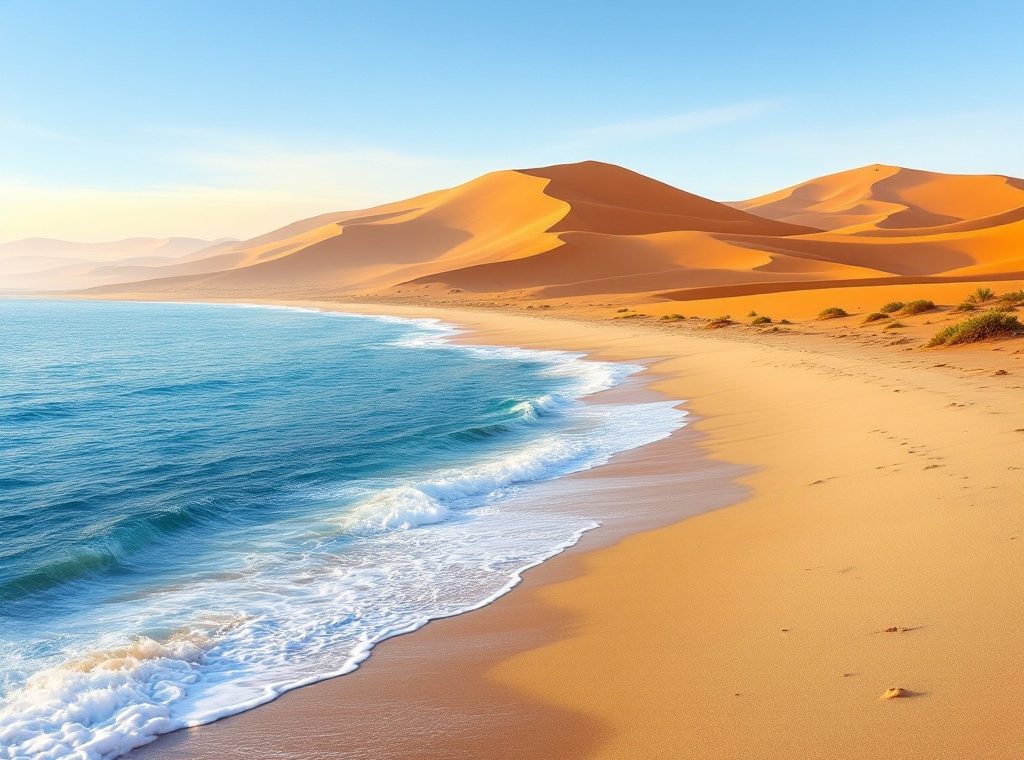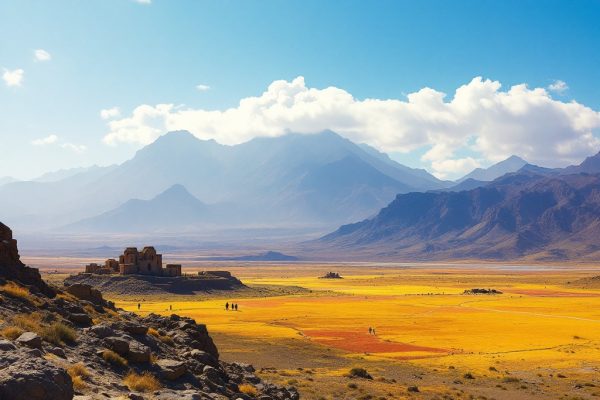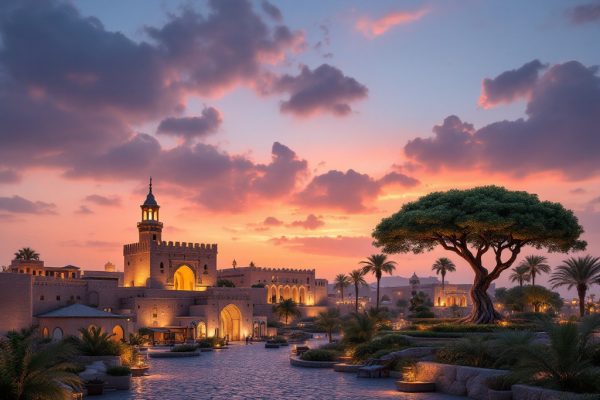Average Temperatures in Mauritania in Winter
Escape Mauritania’s scorching summers and discover its comfortable winter season, boasting pleasant temperatures between 20°C and 30°C. Explore diverse landscapes from the cool Atlantic coast to the vast Sahara Desert. While dry conditions prevail due to the Harmattan winds, the moderate temperatures make winter the ideal time for adventure. Learn about the influence of the Sahara and the Inter-Tropical Convergence Zone on Mauritania’s unique winter climate and plan your perfect escape today.
Important information

- Mauritania’s winters offer mild temperatures, typically between 20°C and 30°C (68°F and 86°F), making it an ideal time for exploring the diverse landscapes.
- Coastal areas like Nouadhibou experience moderate temperatures, averaging around 20°C (68°F), due to the influence of the Atlantic Ocean.
- Inland regions, such as Kiffa, experience wider temperature variations, ranging from 15°C to 28°C (59°F to 82°F) during winter.
- The Harmattan winds, originating from the Sahara Desert, bring dry conditions across the country, contributing to cooler nights, especially in the desert interior.
- The Sahara Desert and the southward migration of the Inter-Tropical Convergence Zone (ITCZ) during winter result in arid conditions and reduced rainfall.
Understanding Winter Climate in Mauritania
Escape Mauritania’s scorching summers by visiting during the mild winter months, where temperatures range from a pleasant 20°C to 30°C. This comfortable climate makes winter an ideal time to explore the country’s diverse landscapes. While northern nights can be cooler, the Atlantic coast enjoys milder weather. However, the Sahara’s Harmattan winds bring dry conditions throughout the nation.
Average Temperatures in Key Regions
Nouadhibou enjoys mild winters, with average temperatures around 20°C.
Kiffa experiences greater temperature variations, ranging from an average of 24°C in January to 36.5°C in May and June.
Zouérat mirrors this pattern, shifting from a cool 18.5°C in January to a hot 34.5°C in August.
The Role of Nouakchott in Mauritania’s Winter Climate
Nouakchott, Mauritania’s capital, is located on the Atlantic coast, which significantly influences its winter climate. This coastal location moderates temperatures, preventing extreme temperatures experienced further inland in the desert regions, and makes January its coldest month.
Factors Affecting Winter Weather in Mauritania
Mauritania’s winter weather is heavily influenced by the vast Sahara Desert. The desert’s aridity and low humidity cause significant temperature swings between scorching hot days and surprisingly cold nights. This extreme variation is intensified by the open desert landscape. The Inter-Tropical Convergence Zone (ITCZ) also contributes to this dry season. Its southward migration during winter drastically reduces rainfall, further solidifying Mauritania’s arid winter climate.
Impact of the Saharan Climate and Desert Conditions
Mauritania’s winter climate is shaped by the Sahara Desert, leading to arid conditions and scorching daytime temperatures. This results in exceptionally dry air and dramatic temperature swings between day and night, affecting the entire country. The Sahara’s vastness also produces dust storms that reduce visibility and worsen air quality. This arid climate restricts vegetation growth and limits water resources, creating a harsh environment.
Influence of the Inter-Tropical Convergence Zone (ITCZ)
Mauritania’s winter climate is largely shaped by the Inter-Tropical Convergence Zone (ITCZ), influencing both rainfall and temperature. Its southward shift during winter months brings significantly drier conditions across most of the nation.
Characteristics of Mauritania’s Winter Climate
Escape Mauritania’s scorching summers by visiting during the mild winter months, a perfect time for exploration. The Sahara Desert provides clear, dry days ideal for sightseeing. However, nights, particularly in the desert itself, can turn quite cold. Along the Atlantic coast, temperatures remain more moderate. As February arrives, signaling winter’s end and the approach of warmer weather, Mauritania becomes even more enticing. From coastal plains to towering dunes, the country offers a diverse range of winter adventures.
Cooler Temperatures and Seasonal Variation
Mauritania’s winters offer a welcome break from the scorching summer heat, bringing significantly cooler temperatures. This change is mainly due to the Harmattan, a dry wind from the Sahara that carries cooler air across the region.
The End of Winter: February’s Temperature Shift
Mauritania begins to thaw in February as winter’s grip loosens and temperatures rise, signifying the coming of spring. While December and January experience colder weather, February provides a welcome change.
Average Winter Temperatures in Major Cities
Coastal Nouadhibou enjoys mild winter temperatures, typically ranging from 18°C to 24°C (64°F to 75°F).
Further inland, Kiffa experiences slightly wider variations, from 15°C to 28°C (59°F to 82°F).
Located in the northern desert, Zouérat sees the coolest winters, averaging between 10°C and 20°C (50°F to 68°F).
Nouadhibou: Coastal City’s Temperature Insights
Nouadhibou’s coastal location moderates winter temperatures, averaging around 20°C. Inland, warmer conditions prevail.
Kiffa: Variation in Winter Temperatures
Kiffa experiences average temperatures of around 24°C in January, but the heat intensifies considerably in the following months.
Zouérat: Temperature Ranges During Winter
Zouérat’s January nights are cool, averaging 18.5°C, while daytime temperatures reach the low 20s. August is the hottest month, with temperatures soaring to a scorching 34.5°C.
Temperature Details for January in Mauritania
Experience Mauritania’s pleasant January weather. Daytime highs reach a comfortable 82.8°F, while nighttime lows dip to a cool 59.2°F, averaging around 70.9°F.
Average, Minimum, and Maximum Temperatures
Experience Mauritania’s pleasant January weather with average temperatures around 70.9°F. While generally comfortable and moderate, temperatures can range from a cool 59.2°F to a warmer 82.8°F.













